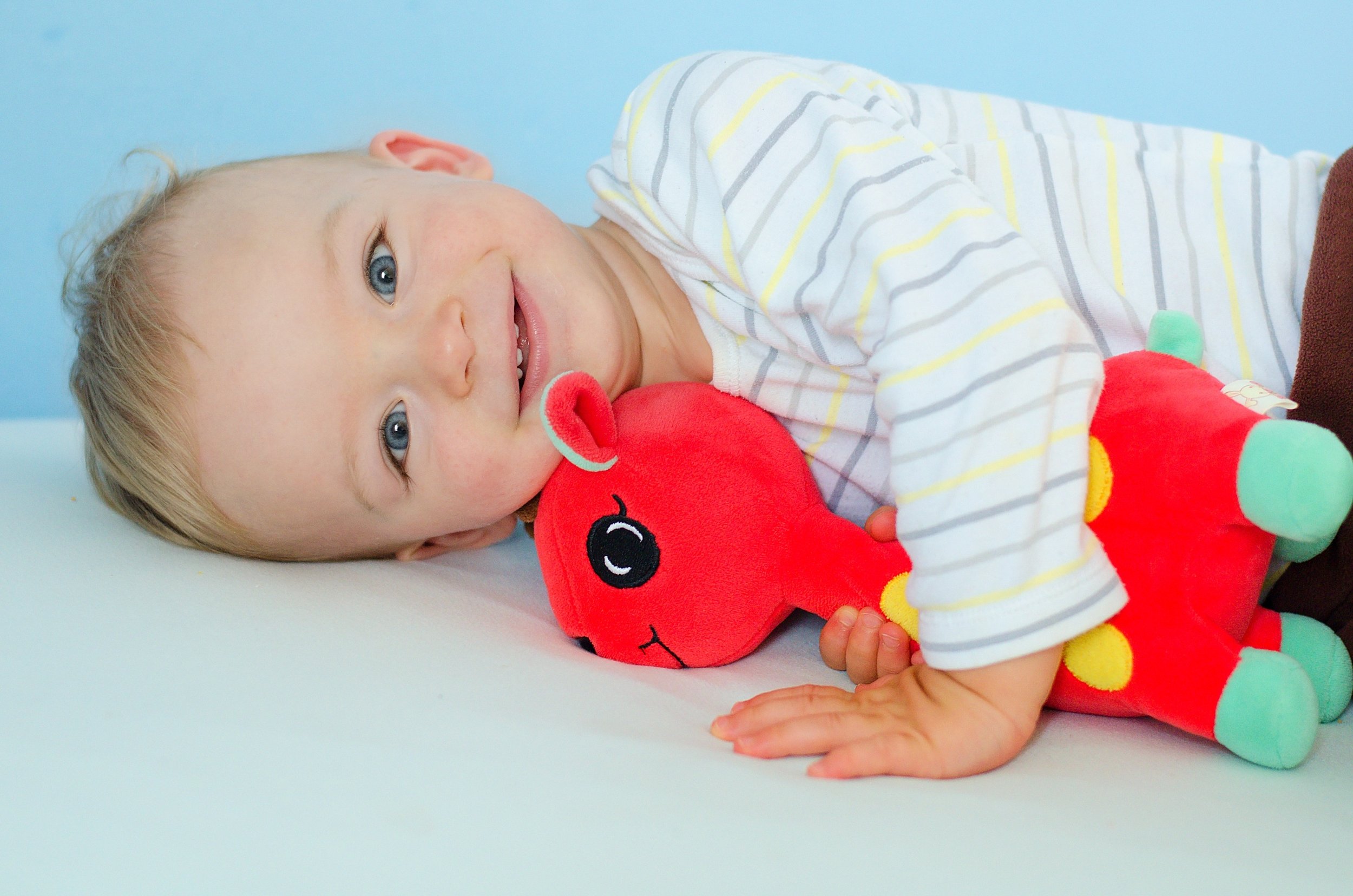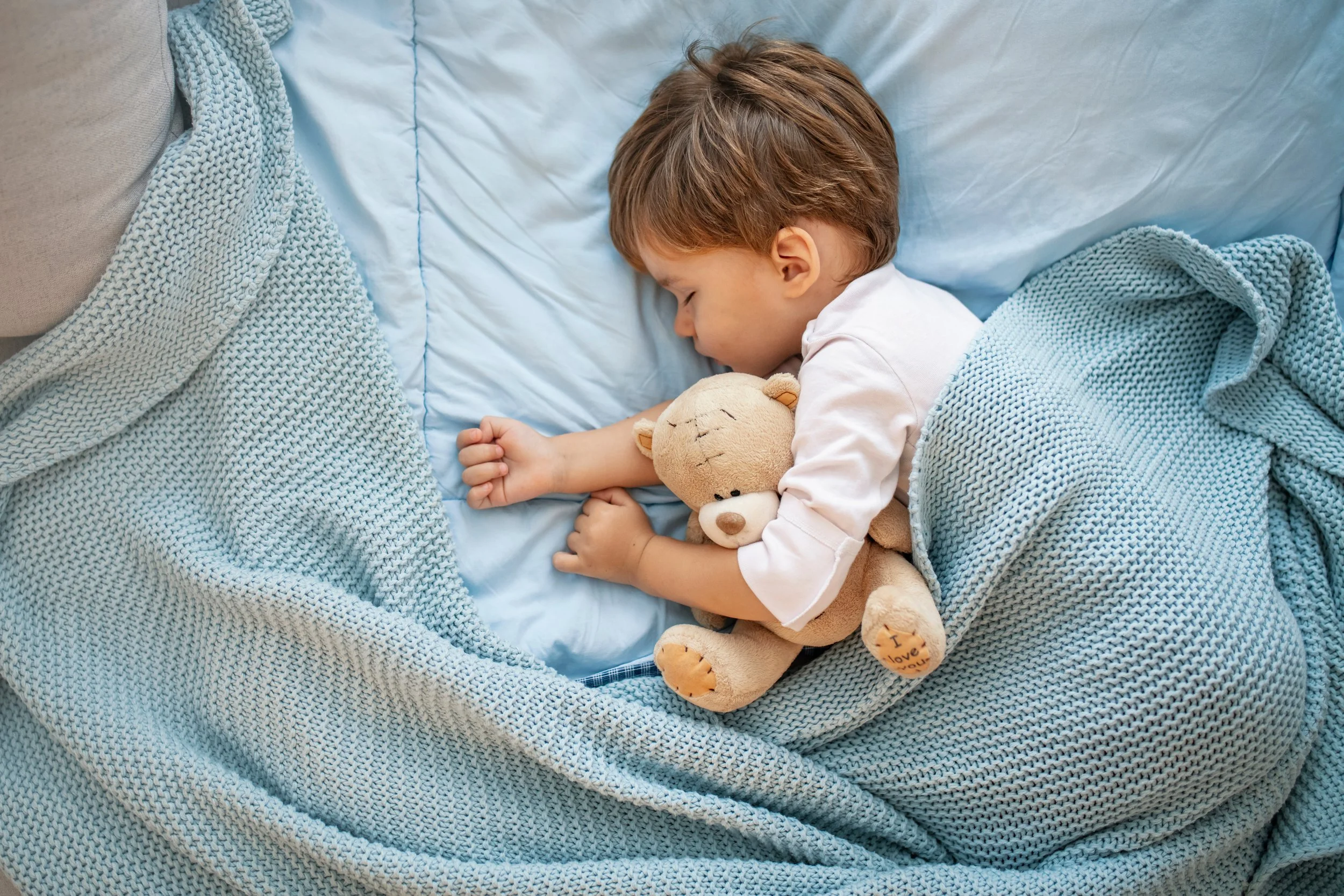When and How to Introduce a Lovey
Today, I’m going to cover all-things-lovey.
I’ll discuss when is the right time to introduce a lovey, how to choose the right lovey, and then finally, I'm going to provide you with tips on helping your child to attach to the new comfort item.
When to Introduce a Lovey
Although introducing a lovey isn't going to solve all of your children's sleep issues, it can help them feel a bit more secure and comforted at bedtime and overnight if they're currently struggling. Bedtime is a time where they can feel a little bit vulnerable and they want to be with an attachment figure (especially you), which I'm sure you want to avoid because you need your sleep, too. A lovey can help to fill that void.
The AAP recommends during a baby’s first year of life that only the baby should be put into their crib with nothing else. Therefore, you definitely want to wait until your child is over a year old to introduce the lovey. That's because under a year, the lovey could pose a suffocation risk. I know you want to keep your baby safe, and so do I, so I highly recommend waiting until your child is the appropriate age.
I've worked with thousands of babies under the age of year a year, and we never, ever use a lovey, and it has yet to pose any issues.
When it comes to teaching a baby to fall asleep on their own, they really don't need anything else but their own internal skills to fall asleep.
However, it can be a helpful tool for older children, especially toddlers who are around 2, 3, 4, even 5 years old. In fact, my daughter who is nine still sleeps with her lovey to this day!
Choosing the Perfect Lovey
First and foremost, if there's something your child likes to sleep with, I would choose that — even if it's not a traditional lovey such as a little stuffy or a blanket. My son used to sleep with a dump truck when he was two. And you know what? That dump truck provided him with just as much comfort as my daughter's little soft bunny provided her.
Even if your child has yet to form an attachment to an item for sleep, you can still have them be part of the process. I highly recommend incorporating them into the process because this way, they’ll be bought-in from the get go. And you know toddlers, they love their control, so the more control you can give them with this, the better.
When coming up with a few options to present to your child, make sure that the object doesn't have any loose parts like buttons, because that can pose a choking hazard. We want to keep your kiddo safe.
Also — make sure you have a backup just in case you lose the lovey. You're going to want to travel with your lovey so that your child has that comfort away from home when it's going to be even more important. Let's face it, things get left in the hotel room! I always leave something and God forbid we leave the lovey! You want to make sure you have a duplicate waiting at home.
Check out our Amazon storefront for our favorite loveys.
Bonding with the Lovey
I bet if your child had it their way, you would be their lovey (or maybe you already are their lovey!) Whatever the case, it can be really helpful to actually wear the lovey around the house. That way when they have it, it smells like you and it's going to induce those warm and fuzzy feelings.
(Pro Tip: Stick it in your bra so that your scent rubs off on it.)
Next, don't expect your child to bond with their lovey right away and want to sleep with it. Make sure that you're slowly introducing it into their bedtime environment. The best way to do that is during the bedtime routine. You can get it to them while you're feeding them. Even if they're under a year, you can start introducing the lovey that way. During feeding time, you can have it part of story time. You can have it tell the story. Find ways to have it involved in the bedtime routine as much as possible before expecting your child to want to sleep with it.
Another way to help support the bonding process is to have your child name their lovey. That way it feels a little bit more personal. Again, they get that opportunity for control: they get to choose the name, so they're going to be more bought-in.
Next, you're going to want to give it to them every time you put them down to sleep, and I would recommend tucking it in with your child. They may not know that they need to hold the lovey. So tuck it into the little nook of their arm each time you put them to sleep. Now again, your child may not form a strong attachment to the lovey right off the bat. So don't give up! Do this each and every night.
The Lovey Can Only Do So Much
I hope these tips help your child to form a special relationship with their lovey, just like my daughter has with her Bun-Bun. Even at nine years old, when she sees her bunny, her eyes light up, and I know that it gives her a lot of comfort and security at bedtime.
As I mentioned before, don't expect the lovey to solve all of your sleep issues when it comes to toddler sleep. What's most important is that they're falling asleep independently and that you have firm boundaries in place. If you feel like you need help with either of those things, that's why Kelly Murray Sleep exists. We can work with you one-on-one to come up with a tailored plan to help your toddler fall asleep and stay asleep independently.
If that's something you're interested in, you can schedule a complimentary discovery call with us right here.
LET’S GET YOU TUCKED IN
Book a 15-minute discovery call today. We’ll chat about your current situation and how my program could benefit you.
Sweet Dreams…
Kelly Murray is a certified sleep coach and an award-winning pediatric sleep consultant based in Chicago offering sleep coaching services nationwide.















